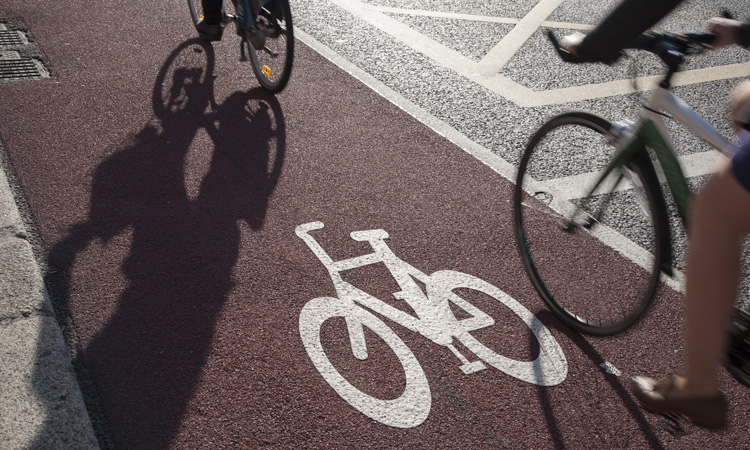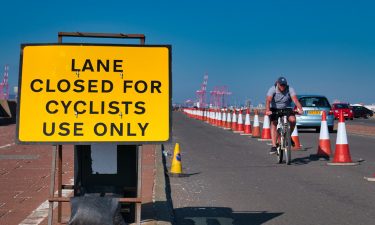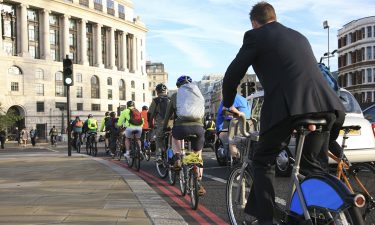Cycling beyond the pandemic: integrating infrastructure with existing networks
- Like
- Digg
- Del
- Tumblr
- VKontakte
- Buffer
- Love This
- Odnoklassniki
- Meneame
- Blogger
- Amazon
- Yahoo Mail
- Gmail
- AOL
- Newsvine
- HackerNews
- Evernote
- MySpace
- Mail.ru
- Viadeo
- Line
- Comments
- Yummly
- SMS
- Viber
- Telegram
- Subscribe
- Skype
- Facebook Messenger
- Kakao
- LiveJournal
- Yammer
- Edgar
- Fintel
- Mix
- Instapaper
- Copy Link
Posted: 13 August 2020 | Daniel Gillett - Sustrans | No comments yet
Daniel Gillett, Policy Officer at Sustrans, suggests how the UK can get more people cycling during and beyond the pandemic, how new infrastructure can be integrated with existing transport networks, and how Government action should be long-term.


Late last month the British Government launched Gear Change, their vision for “a travel revolution in England’s streets, towns and communities”. This came hot on the heels of a £2 billion funding announcement for walking and cycling. It promises to be bold and, significantly, the Prime Minister has made it a personal priority.
The ‘Gear Change’ strategy sets out what is common knowledge; that more people cycling more short journeys will help to tackle carbon emissions, traffic congestion, air pollution and the physical inactivity crisis.
The COVID-19 crisis has had an unprecedented impact on the way that we travel
Securing a shift to active modes has only become more crucial since the beginning of the COVID-19 pandemic. While vehicle use plummeted during the initial stages of the COVID-19 lockdown, by 3 August traffic levels had reached 90 per cent of expected usage, with many people still working from home and school children on holiday.
With public transport still limited in capacity and appeal, there is a real risk that traffic will exceed pre-pandemic levels.
The Government wants to get people moving actively, and have come up with a plan and some cash to make that happen, but the real challenge will be delivery on the ground.
More people cycling?
The Government’s bold vision requires bold action. Over the past two decades, numerous governments have unveiled strategies to get more people cycling to work, to the shops and to school, but cycling has stubbornly hovered at between one and two per cent of journeys made.


Road lane closed in Brighton in May 2020 to give priority to cyclists during lockdown
The reason for that, truthfully, is that not enough has changed to genuinely make it easier or safer for more people to cycle across the UK. Just this week, new research showed that 66 per cent of adults do not consider it safe to cycle on roads. Parents in that cohort are not going to let their children cycle either.
It has long been shown that separating cycles from vehicles, reducing the number of vehicles on quieter streets and lowering speed limits increases cycling locally. High quality infrastructure design standards and enshrining the place of vulnerable road users in a road hierarchy helps too. These changes are most effective when led by the community, and when combined with education and training, and increased access to cycles. It helps if homes are located close to everyday services and needs, too.
Securing a shift to active modes has only become more crucial since the beginning of the COVID-19 pandemic
We also need to do more to make it easier for people who are the least likely to cycle, to do so. Sustrans’ recently published Cycling for Everyone guide to inclusive cycling shows that policy has too often served the needs of people that are more likely to already cycle, and that the potential to engage others is huge.
55 per cent of people from ethnic minority groups who never cycle would like to start, while 38 per cent of people at risk of deprivation, 36 per cent of women, and 31 per cent of disabled people who do not cycle would also like to give it a go. More people want to cycle but we are not doing enough to address their needs.
At the same time, it needs to be made easier and safer for people to make walking trips locally.
The good news is that ‘Gear Change’ looks to address these issues, with the next challenge being local delivery.
Introducing and integrating new measures
There are many things we can do to integrate meaningful active travel infrastructure with the existing transport network:
- Create a direct, coherent and safe network of routes to homes, schools, workplaces and public transport stops, which may repurpose some existing road space
- Implement simple, access-only low traffic neighbourhoods to reduce excess traffic on residential streets
- Provide more cycle parking at shops, transport hubs, workplaces and schools
- Ensure that all new homes are connected to walking and cycling infrastructure, and close to existing amenities.
But the question of how active travel measures are integrated with our existing road network needs to be considered from not only a technical perspective, but also a community one.
Local delivery
In towns and cities throughout the UK, space comes at a premium. Houses line streets and cars line pavements. Space to build new cycling infrastructure is scarce and implementing changes to road space which genuinely make it easier for more people to cycle involves either repurposing existing road space, or restricting through-traffic in places.
Consistent, long term funding needs to be made available to local authorities to deliver schemes
We know that 77 per cent of people want better cycling and walking schemes, but given that driving dominates transport in the UK, it’s too easy for well organised, vocal groups to pull the brakes on schemes which would benefit almost all people in the local area.
Even during an unprecedented pandemic, where more people walking or cycling can free up space on the road and public transport for those who can’t, plans to provide safe transport options have been stymied in cities, towns and rural areas as local authorities have either got cold feet or simply not bothered engaging with the issue.
This issue of localism is one which needs to be addressed; how can innovative Government transport policy be delivered at local level, across areas which differ wildly in socio-economics, political allegiances and topography?
Lessons learnt
In terms of encouraging action by local authorities, central Government can tie funding and approval for development or transport schemes to local performance on active travel. The newly established Active Travel England will grade local authorities on their progress, providing an idea of where is and is not engaging.


Once the initiative has been seized, placing the local community at the heart of the process through a collaborative design approach is essential to delivering successful walking and cycling schemes. Years of travelling through their neighbourhood by foot, cycle or car results in a deep awareness of the issues and innovative solutions for them.
By engaging closely with local people from the beginning and ensuring proposals tackle the problems they identify, the risk of local resistance during the consultation, and a change of heart from our politicians, is substantially reduced.
The future: 20-minute neighbourhoods
The COVID-19 crisis has had an unprecedented impact on the way that we travel. In the medium term, the risks include soaring car use, chronic traffic congestion and more pollution. The opportunities including more living locally, reconsidering funding commitments for transport infrastructure that will increase CO2 emissions, and introducing fiscal incentives which favour public transport, walking and cycling.
While the Government will press on to deliver better active travel options in existing areas, opportunities also lie in future developments. At Sustrans we believe that the 20-minute neighbourhood principle should be adopted as a core principle of the planning system for new developments, to ensure that people can live within a 20-minute there-and-back walk of everyday services and needs, and that local streets are safe for walking and cycling.
How can innovative Government transport policy be delivered at local level, across areas which differ wildly in socio-economics, political allegiances and topography?
Too many neighbourhoods have been planned around car travel at the expense of providing the local jobs and services that a community needs to thrive, and people without access to a car are left with poor access to these things.
As the UK’s population continues to rise and the need to make walking and cycling easier becomes more urgent, it is crucial not only that we make existing infrastructure more walking and cycling friendly, but also stop building out of town housing and estates devoid of services and dependent on the car, and start building neighbourhoods.
Biography
Daniel Gillett is Policy Officer at Sustrans, the charity making it easier for people to walk and cycle. He has previously worked in consultancy and attended the Institute for Transport Studies at Leeds University.
Related topics
COVID-19, Infrastructure & Urban Planning, Passenger Accessibility, Sustainable Urban Transport, Transport Governance & Policy
Related modes
Cycling
Related cities
UK
Related organisations
Sustrans








